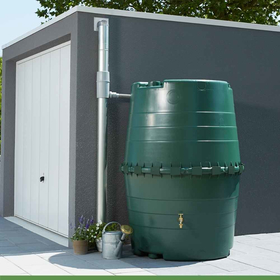Installation of an underground rainwater recovery tank
Water is a precious resource. With climate change, the trend is towards irregular precipitation (rainy periods that are increasingly spaced out but more intense). In addition, the South of France is experiencing a drop in annual rainfall.
Watering your garden with drinking water is neither ecological nor good for your plants (the water is chemically treated).

Calculate the volume of your rainwater tank
A rainwater collection tank in your garden
In order to maintain a beautiful garden or simply to preserve drinking water, installing a rainwater recovery tank allows you to ensure autonomy and comfort. You have water available even during periods of restriction.
The tank will be directly connected to a gutter by a collector and thus create a dedicated network.
To help you with your project, here is the photo report from one of our clients. He installed a 7,500 liter underground tank in his new house.
Delivery of the buried rainwater recovery tank
When you buy your tank, remember to find out about the delivery terms :
- Who takes care of unloading (legally, it is up to the buyer to do this)
- Estimated weight of the tank
- Delivery costs integrated or not
Lacentrale-eco delivers by appointment, so that you can coordinate the arrival of the tank with the presence of the excavator.
For your part, have you checked the constraints linked to your land :
- Nature of the land
- Space needed to make the hole
- Height of the water table and soil infiltration capacity
- Accessibility for a truck over 3.5 tonnes
- Vehicle passage above the tank
- Tank handling
- Presence of trees or other obstacle (post, wall, etc.)
Unloading the tank
For this project, our client made the decision to have it delivered, at his expense, by a truck crane.
The presence of a wall as well as surrounding houses made this crane necessary.
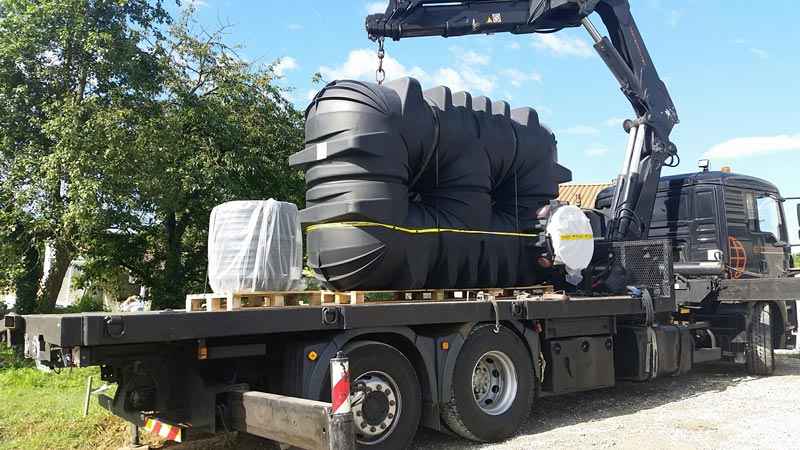
In other cases, given the low weight of plastic tanks, unloading can be done by hand or with a mechanical shovel.
To give you an example, some customers unloaded their 7,500 liter tanks, with 6 people (360 kg per tank).
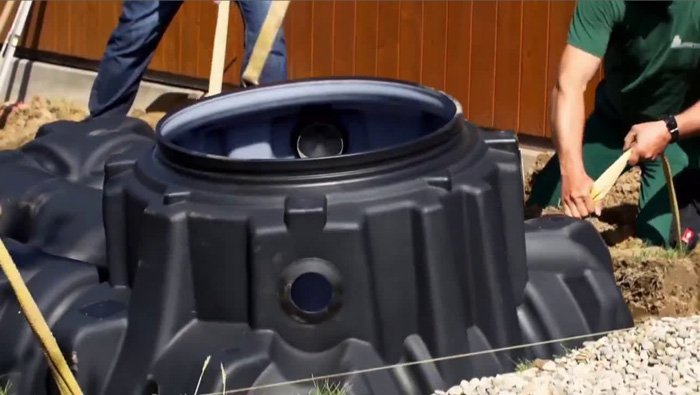
Please note that unloading is your responsibility, with your means to remove it from the truck.
Depending on your project, include the rental of construction equipment in your budget. It is essential to prepare the bottom, but also to position the tank.
Allow around 200 to 300 euros per day, excluding the excavator's remuneration. To this can also be added the skip to evacuate the earth.
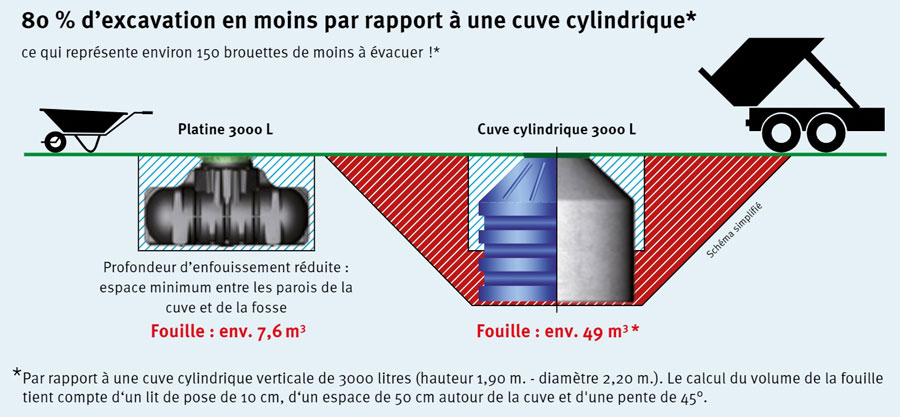 |
| Flat tanks have the advantage of limiting the volume to be extracted |
Flat tanks, for smaller volumes, save on excavator rental. Bring a little elbow grease!
PVC network
The burial depth of the tank depends on the burial depth of the PVC network connecting the gutters to the tank.
Allow a minimum slope of 1 to 2 cm per meter to ensure good water circulation.
The diameter of the conduit depends on the connected roof area. A 110 millimeter network allows DN 110 to be covered up to 350 m² of roof.
Install the buried water collector
1. Provide a location 1.00 m from any construction, on flat ground.
If vehicles are required to travel above the tank, plan:
- a minimum backfill height of 80 cm and
- a suitable extension, with its cover
2. For the search :
Take a margin of at least 20 cm (50 cm for cylindrical tanks), to add to the dimensions of the tank
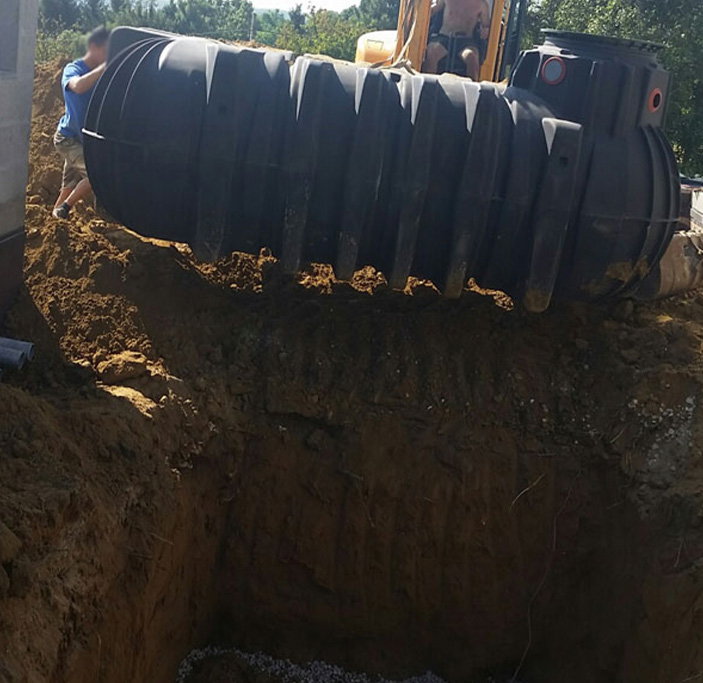
the construction machine facilitates the handling of the tank
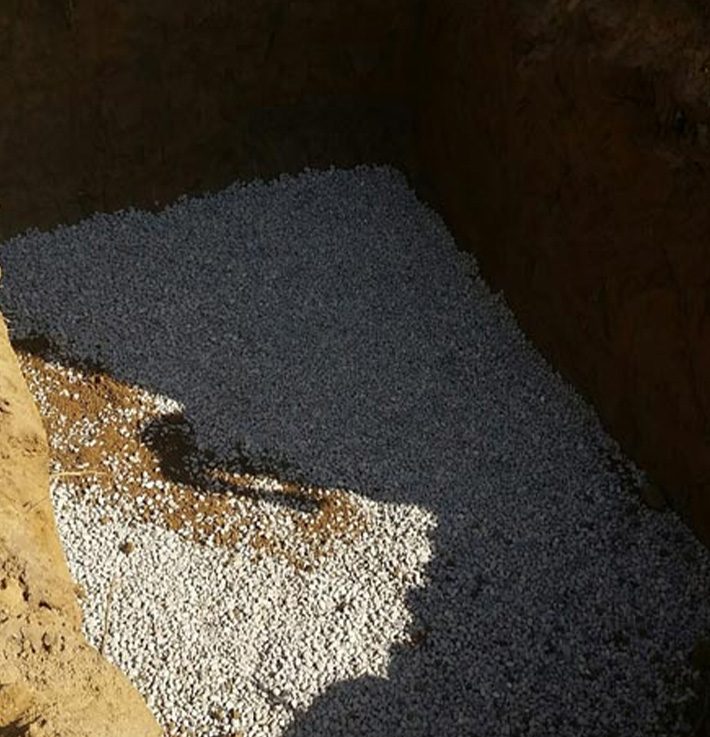
Bottom of the excavation with its gravel
3. Allow a margin of at least 20 cm for digging (50 cm for cylindrical tanks), to be added to the dimensions of the tank
4. Pour a 20 cm layer of gravel or sand into the bottom and level the level well
5. Place the tank gently with your muscular arms (and strong straps) or with the construction machine
6. Before backfilling, make sure the top of the inspection hatch is level with the surface.
If your soil is not very permeable, you must add a drainage pipe
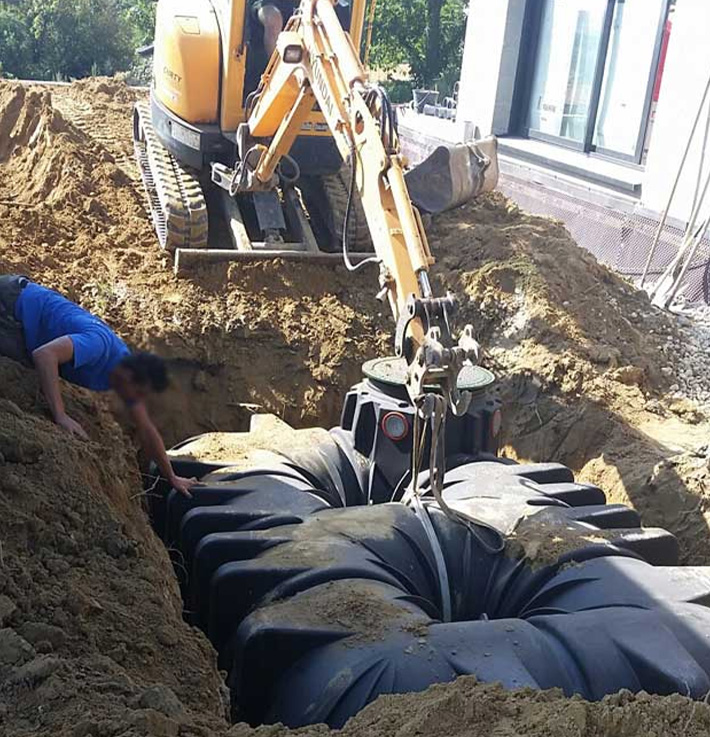
The customer has left 10 cm on each side of his tank (for flat or rectangular tanks)
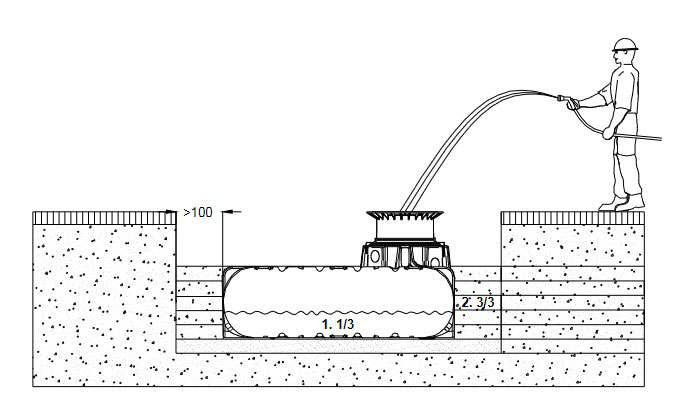
7. Backfilling
The space between the trench and the tank must be at least 10cm.
To properly stabilize the tank, an initial 1/3 filling is necessary before pouring the round gravel, in successive layers of 30 cm.
Never use earthmoving equipment to compact the backfill. Use a hand tamper
8. Connection:
Inlet and outlet pipes rainwater must respect a slope of at least 1% to promote water flow.
A trench must also be dug to evacuate the overflow from the tank, either to the rainwater collection network or to a spreading system.
No posts found
Write a review
